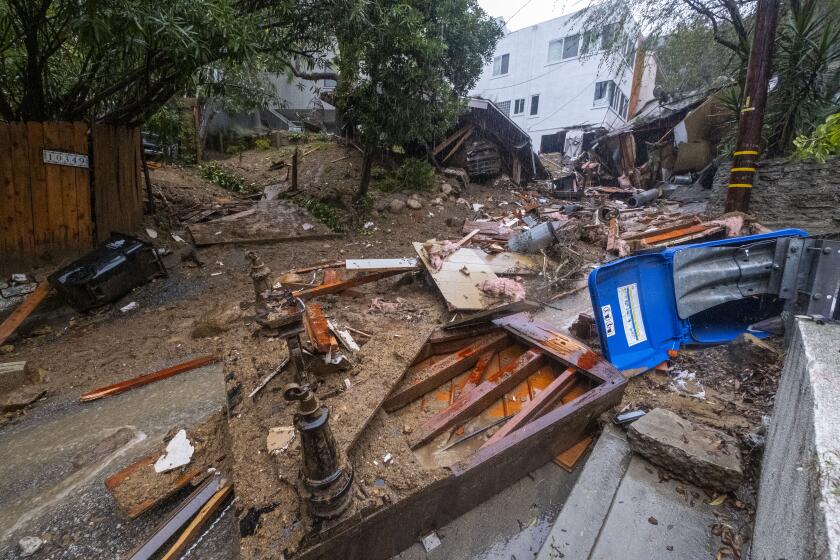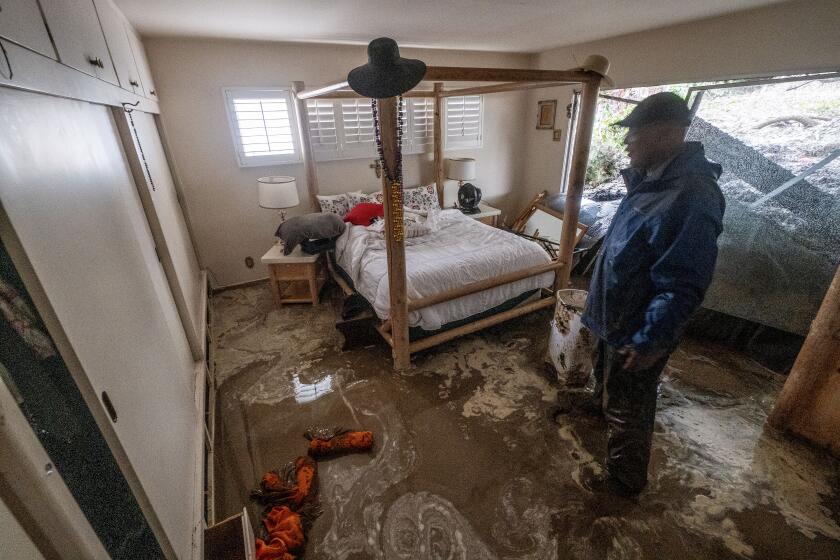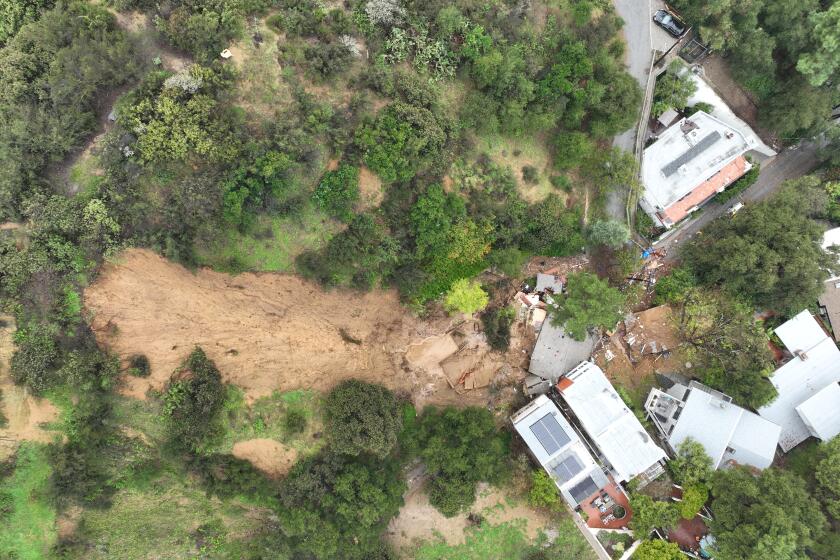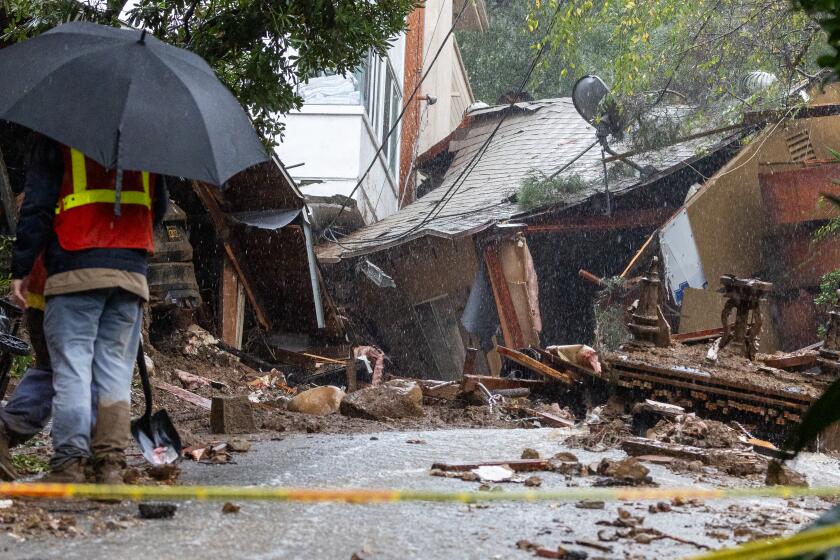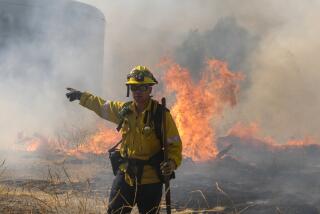Flood damage raises alarms about California’s next ‘disaster insurance gap’
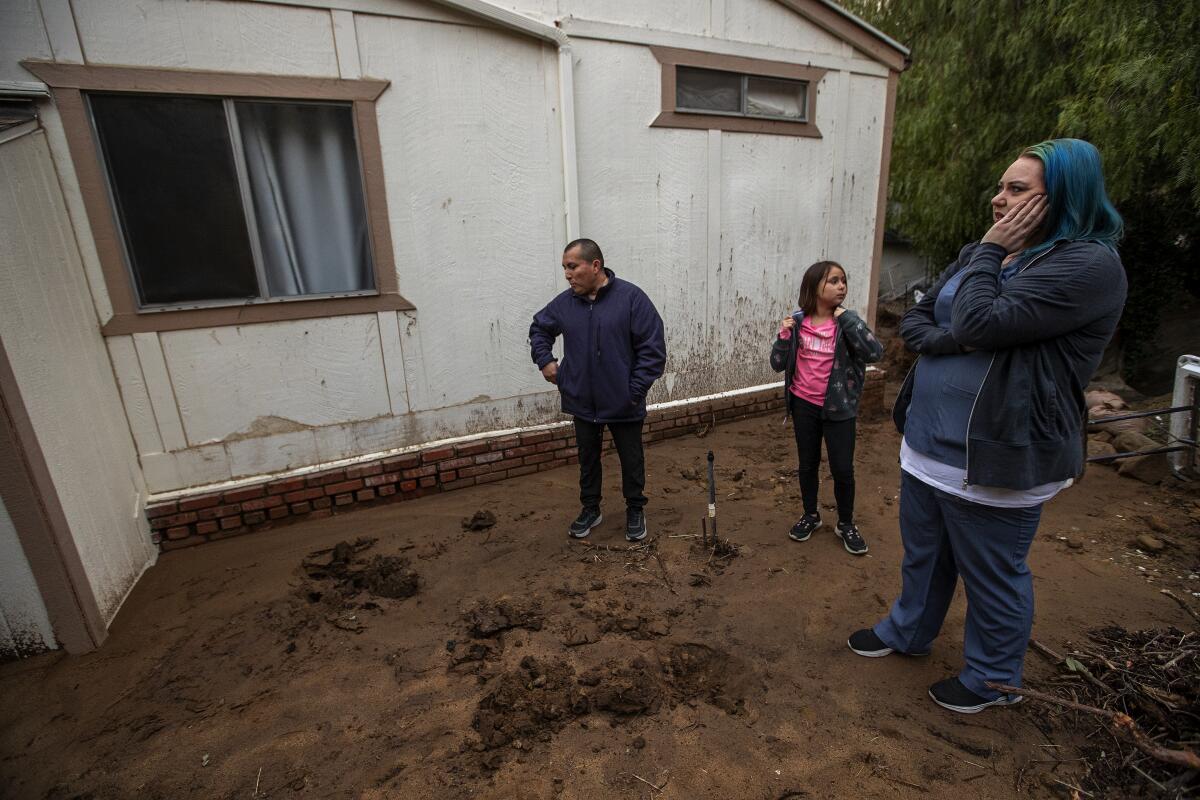
Dakota Rivas was getting out of the shower the evening of Feb. 4 when she heard a dull roar behind the home her family rents in West Hills. A fast-moving mudslide had begun on the rocky hill behind the property, overwhelming a clogged drain, backing up against the house and tearing across the yard where her children and dogs play.
“It sounded like thunder or something big rolling,” the 32-year-old said, surveying the damage after the rain finally stopped last week. “I went to go check what it was and saw a bunch of mud and water flowing into our driveway.”
For the record:
11:33 a.m. Feb. 13, 2024An earlier version of this article said the storm that damaged Dakota Rivas’ home began on Jan. 4. The storm began on Feb. 4.
She pointed up at a cascade of water still flowing down the hillside.
“This waterfall behind our house,” she said, “was not here at all before.”
For many Southern Californians, this is the new normal. Homes once prized for hillside views and apartment complexes on low-lying urban streets alike are increasingly under threat from severe flooding, mudslides and heavy winds. Wildfires and earthquakes have long been the focus of concern, but the consequences of wet storms are only now beginning to generate similar levels of alarm.
The Rivases had renters insurance when they lived in a house a few doors down. But when they moved in November, they couldn’t get a policy because of the location. What’s been called the “disaster insurance gap” has become an increasingly dire concern in recent years. Even those who have insurance but live in imperiled places are often unable to secure sufficient policies to protect their residences and belongings.
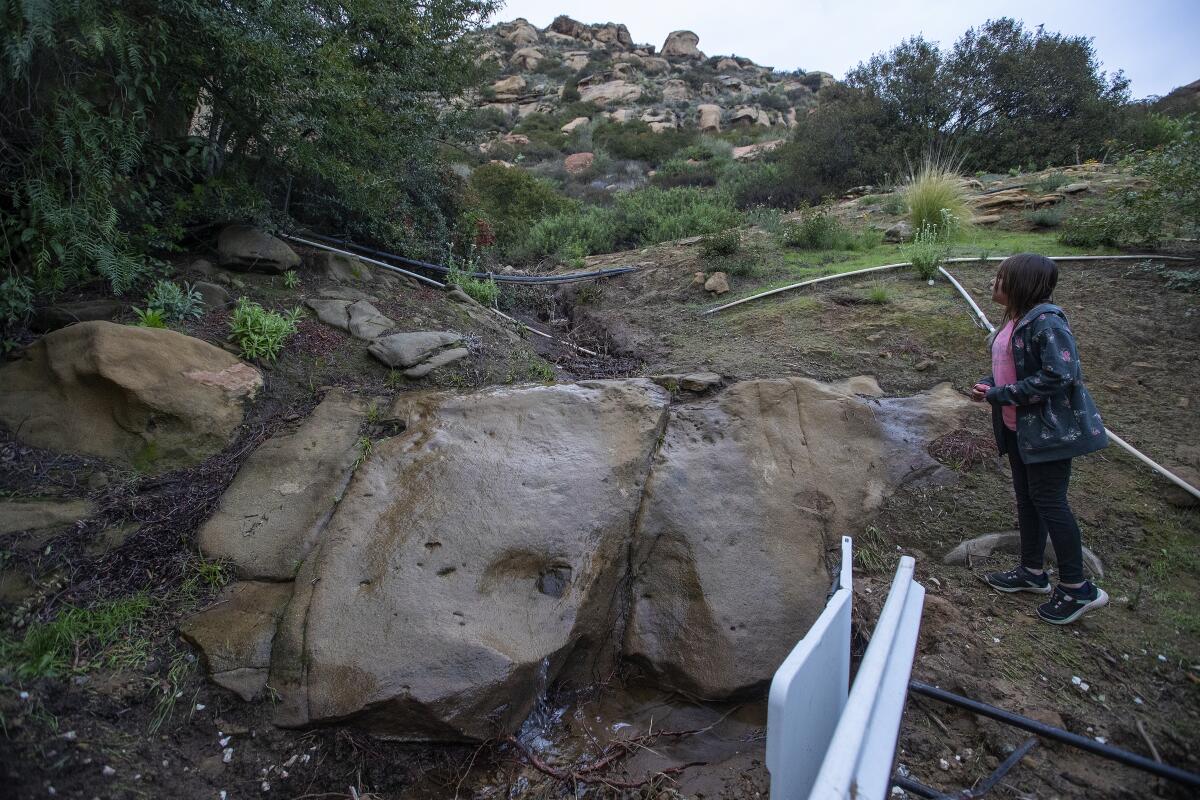
Rates of homeowners and renters with flood insurance policies have lagged as more of Southern California has become subject to extreme weather patterns spurred on by climate change. In the eight Southern California counties that were under a state of emergency during the recent storm, only 52,820 homes and businesses were covered by flood policies, according to the National Flood Insurance Program.
Probably not. That’s because in Los Angeles County, home to nearly 10 million people, there are just 14,580 flood insurance policies on the books.
Homeowners, renters and insurance providers have been slow to catch up to the changing climate, leaving families across the Southland with little financial protection against the wind and water at their doors.
“They just don’t offer rental insurance in this area anymore, mostly because of fires,” Rivas said. “We’ve never had flooding up here before. It just wasn’t even something anyone thought about.”
***
The mud kept sliding for several days. As it gained power that first night, Rivas and her husband, Walter, 42, borrowed shovels from neighbors and dug at the flowing earth for hours, trying in vain to clear a channel around their home.
“We were just battling Mother Nature, and we were at her mercy,” Walter said. “And we were losing.”
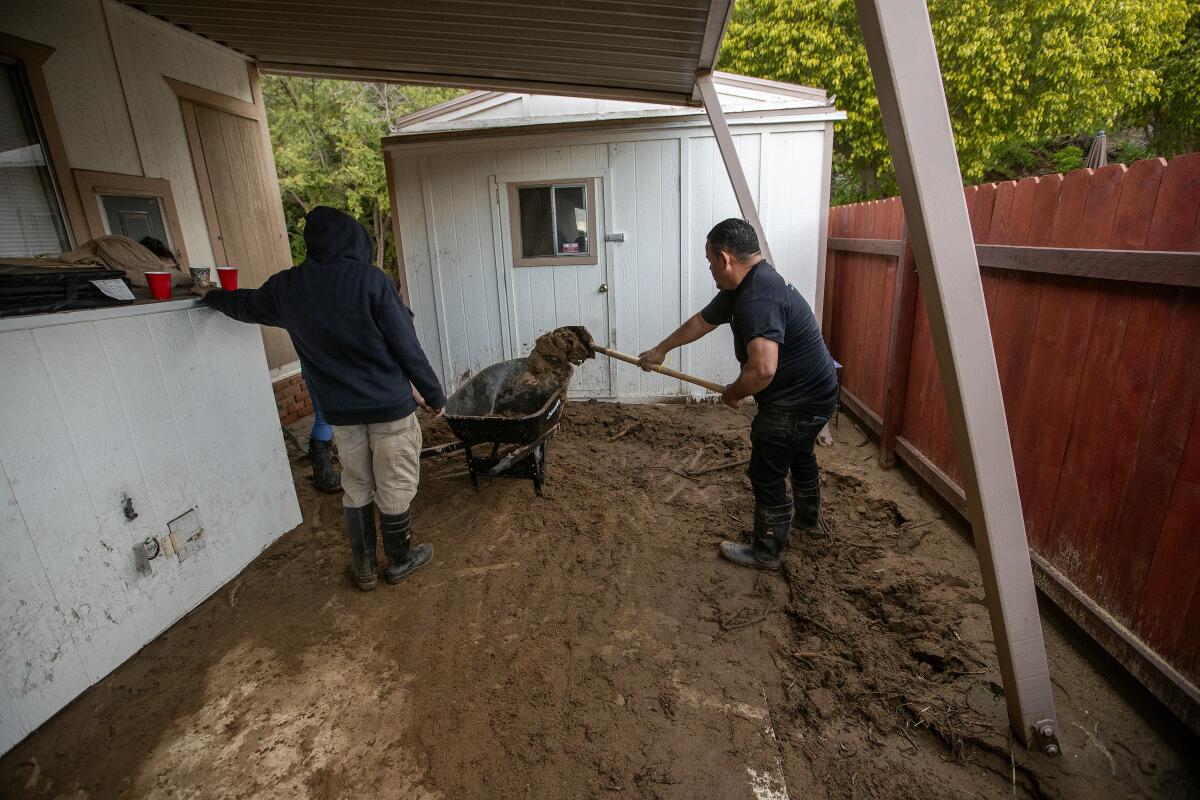
Ultimately, the Rivases — who have a son, Isaac, 10; a daughter, Maleeyah, 9; a Shih Tzu named Polly Pocket; and a Chihuahua named Mia — were lucky. Their efforts — along with those of firefighters who cleared the blocked drain the following day — paid off, and their two-bedroom home was left damaged yet standing. But their well-tended yard and many of their personal belongings were destroyed.
The couple hope their property management company will quickly fix the home and pay to replace some of their things. Last week, Dakota started a GoFundMe campaign that is falling far short of its $3,000 goal. She wishes she’d had insurance to cover the costs that are mounting in the storm’s wake.
Even if the Rivas clan had managed to get insurance, their plan likely would not have covered much of what they lost, as most standard renters policies don’t cover damage from flooding.
Across Southern California, homes and businesses took on water during this week’s storm. Here’s what experts say they need to do next.
It’s the same for most homeowners. For those in certain high-risk flood zones who have mortgages, flood insurance is required.
For people whose homes are in thousands of federally designated flood zones across the country, the U.S. government offers policies via the National Flood Insurance Program. But payouts under the program are capped at $250,000 for the structure of a typical home and $100,000 for its contents. Beyond that, policyholders are on their own.
Nationwide, about one-fifth of insurance claims for flood losses are made outside the designated flood zones, according to Janet Ruiz, a spokesperson for the Insurance Information Institute, a national industry group. In other words, areas not typically known for flooding can still be at risk of sustaining major damage. In L.A. County, according to Ruiz’s group, there are more than 3.5 million housing units and fewer than 20,000 flood insurance policies.
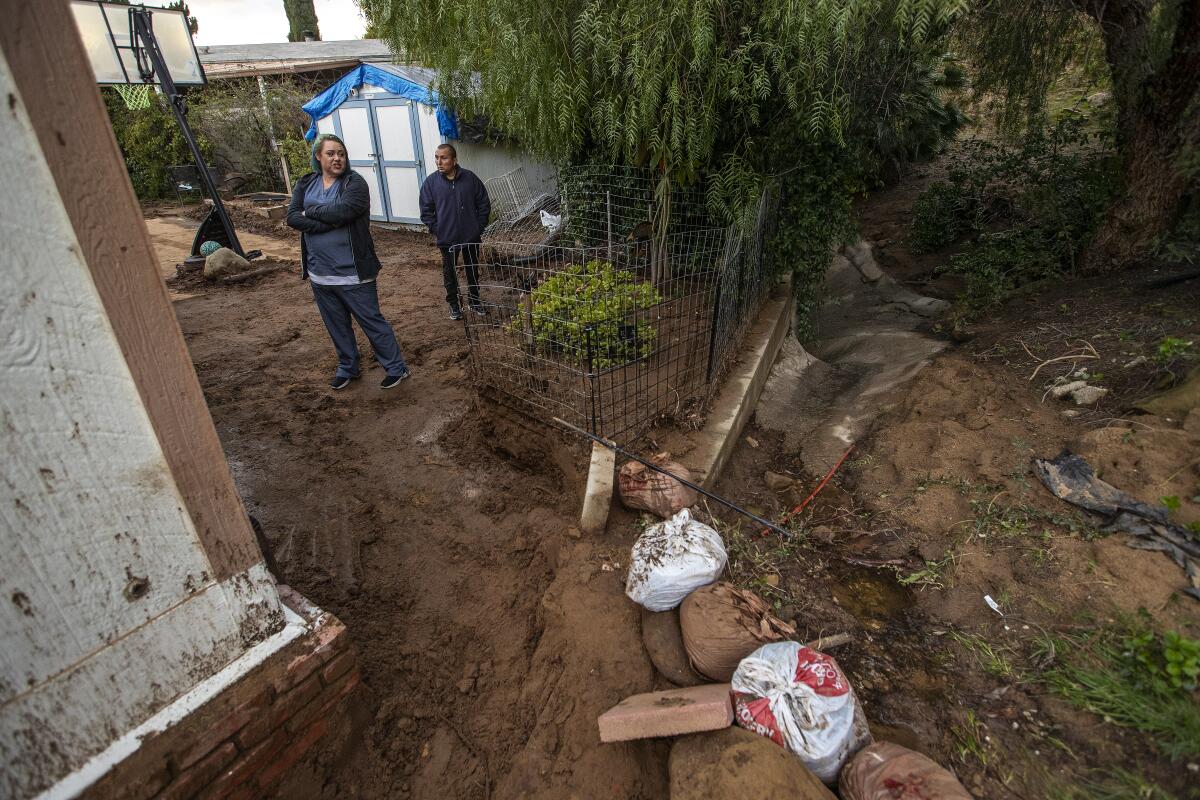
That means a couple of days of heavy rain can bring economic devastation.
“Most insurance policies, typically, unless you have flood insurance, don’t cover groundwater,” said Mark Eaton of MSB Disaster Recovery in Agoura Hills. “Right now, we’ve got people with basements with water in them that overwhelmed their pumping systems, but it’s not covered.”
***
At the onset of last week’s storms, water began pouring through the ceiling of a unit at a sprawling apartment complex in Santa Clarita, and it continued seeping in for three days. By Thursday, the ceiling paint in the living room was blistered and cracked. A dark-blue carpet was rolled up along one side of the apartment, and much of the furniture was shrouded in plastic.
Joel Moss, chief business development officer at Paul Davis Restoration, a national water, mold and fire cleanup and restoration company, was called by the property owner to help.
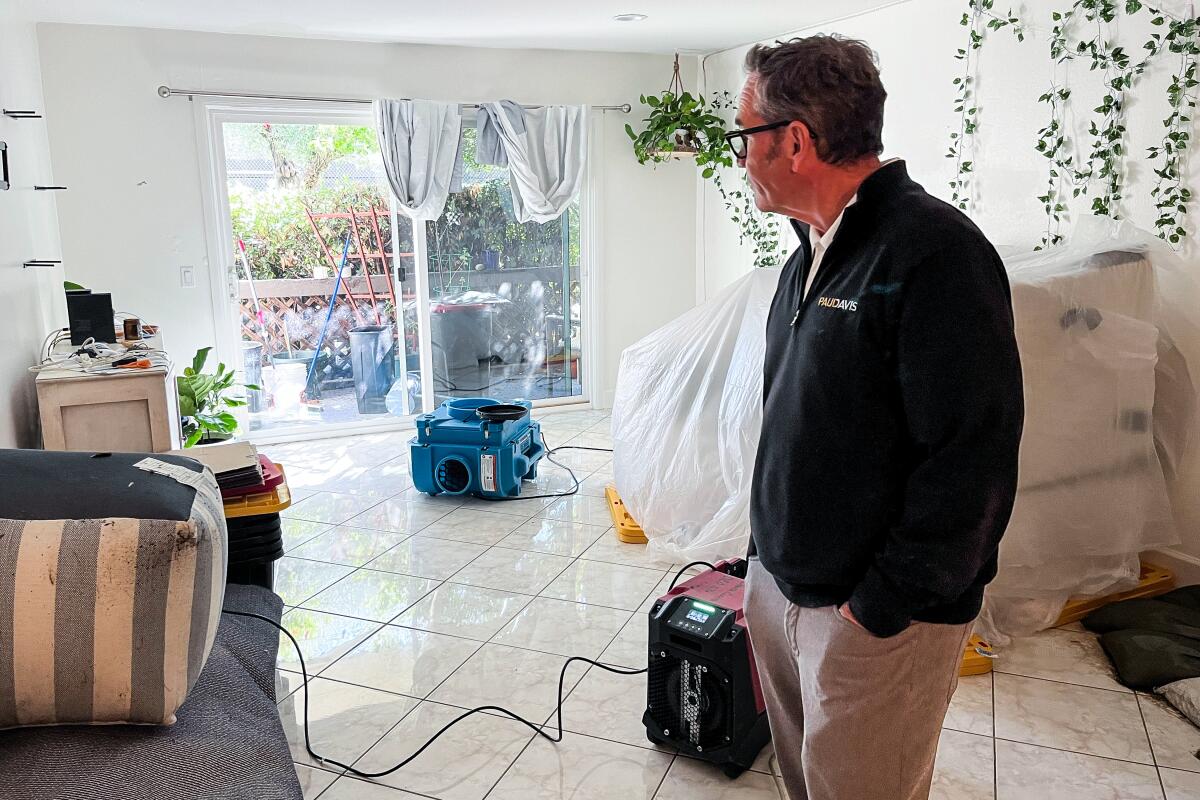
“There was easily this much water on the floor,” Moss said, holding two fingers a couple of inches apart while pointing at the living room’s white tiles. “It was pouring out the front door.”
Over the hum of an industrial-strength air purifier and dehumidifier, Moss said the tenants had to vacate the unit quickly, leaving food and dishes on the counter. It will likely be weeks before the apartment is habitable, he said, and in the meantime, its occupants need a place to stay.
The city was still working its way through 562 mudslides as of Wednesday evening. Burn scars, loose earth and improper construction are all factors.
Additional living expenses are covered by many homeowners and renters insurance policies but not typically by flood policies. Many people whose homes take on water have to pay out of pocket for a hotel or Airbnb.
The cost of temporary accommodations is just one of many factors tenants and homeowners can consider when deciding what kind of insurance to obtain. Insurers offer menus of coverage options for damage sustained in nearly all manners of natural devastation, from hurricanes to earthquakes.
But one type of disaster that’s typically not included in even the most expensive and expansive policies is mudslides. Entire Southern California hillsides have slipped away in years past, and last week’s storm triggered several severe flows and hundreds of smaller ones. Ruiz said protection from mudslides is typically sold separately, as part of a “difference in conditions” policy.
“Not many brokers or insurers sell it,” she said. “And it’s expensive if they do.”
***
The end of a catastrophic event is only the beginning when it comes to insurance claims.
Insurance companies are incentivized to deny or minimize payouts, according to Omar Ochoa, a Texas attorney who specializes in property damage claims. He said firms are moving toward policies that give them more ways to avoid losses, which means homeowners need to advocate for themselves.
This week’s megastorm has damaged many rentals as it barrels through the state. Here is what renters can do to fix the damage.
“People don’t have to accept a bad claim decision,” Ochoa said. “To some extent, the insurance industry banks on people not complaining and not challenging their claim decisions.”
Ochoa suggests policyholders consult with a lawyer if they believe they’re being low-balled by a claims adjuster. Ruiz said customers can also go straight to their insurers and negotiate with the claims adjuster.
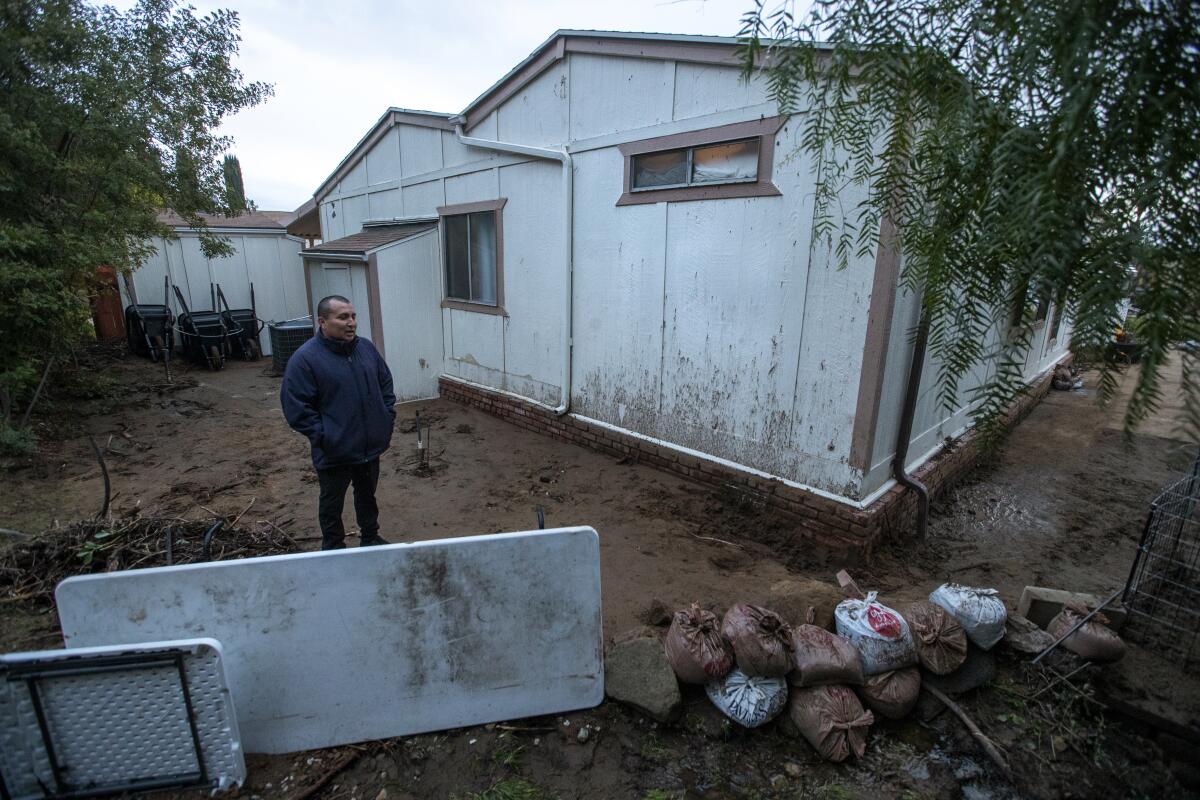
“That’s normal,” Ruiz said. “It’s often surprising to people who have claims they feel are too low.”
It’s impossible to insure away all risk to your home, Ruiz added, so it comes down to evaluating the risk of a particular calamity against the cost of a monthly premium. For Southern Californians who can manage to find and afford coverage, that calculation may be tipping in favor of having flood insurance after last week’s storms.
“We had been so focused on wildfire and drought that it was hard to imagine flooding, so a lot of Californians didn’t have flood policies,” Ruiz said. “We need to turn the tide.”
Times staff reporter Sam Dean contributed to this report.
More to Read
Sign up for Essential California
The most important California stories and recommendations in your inbox every morning.
You may occasionally receive promotional content from the Los Angeles Times.
